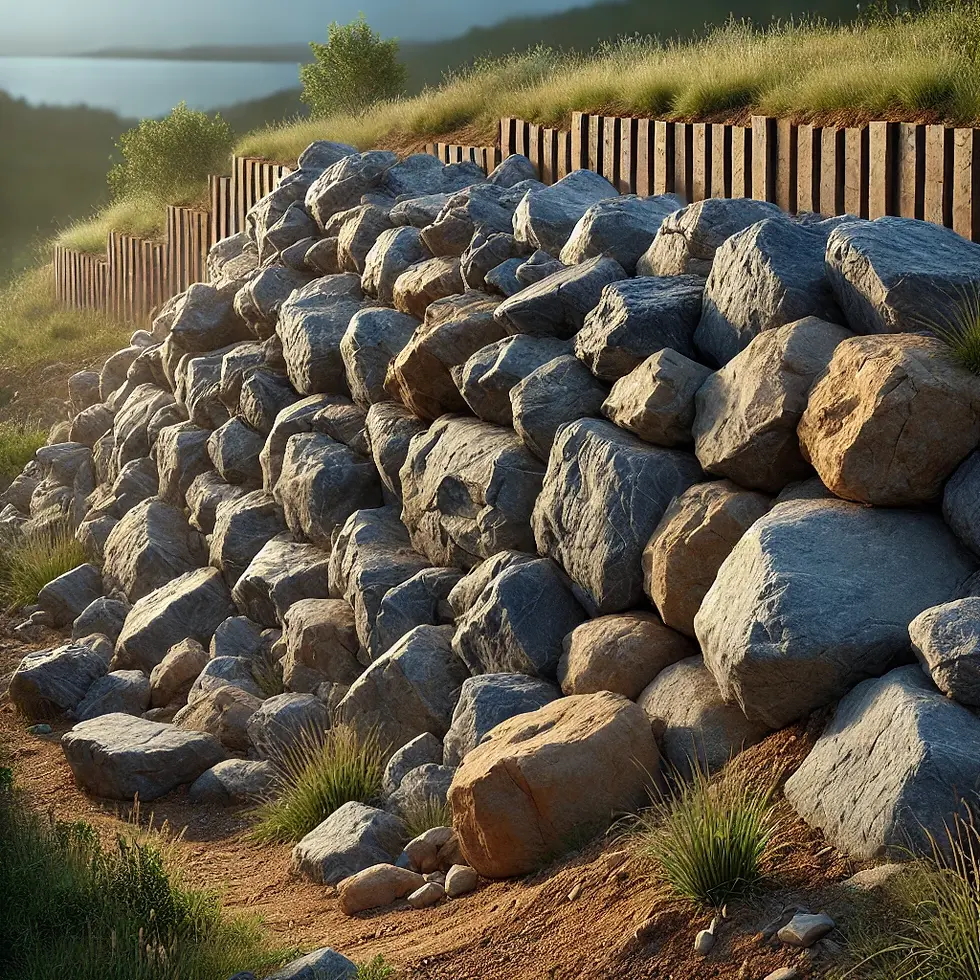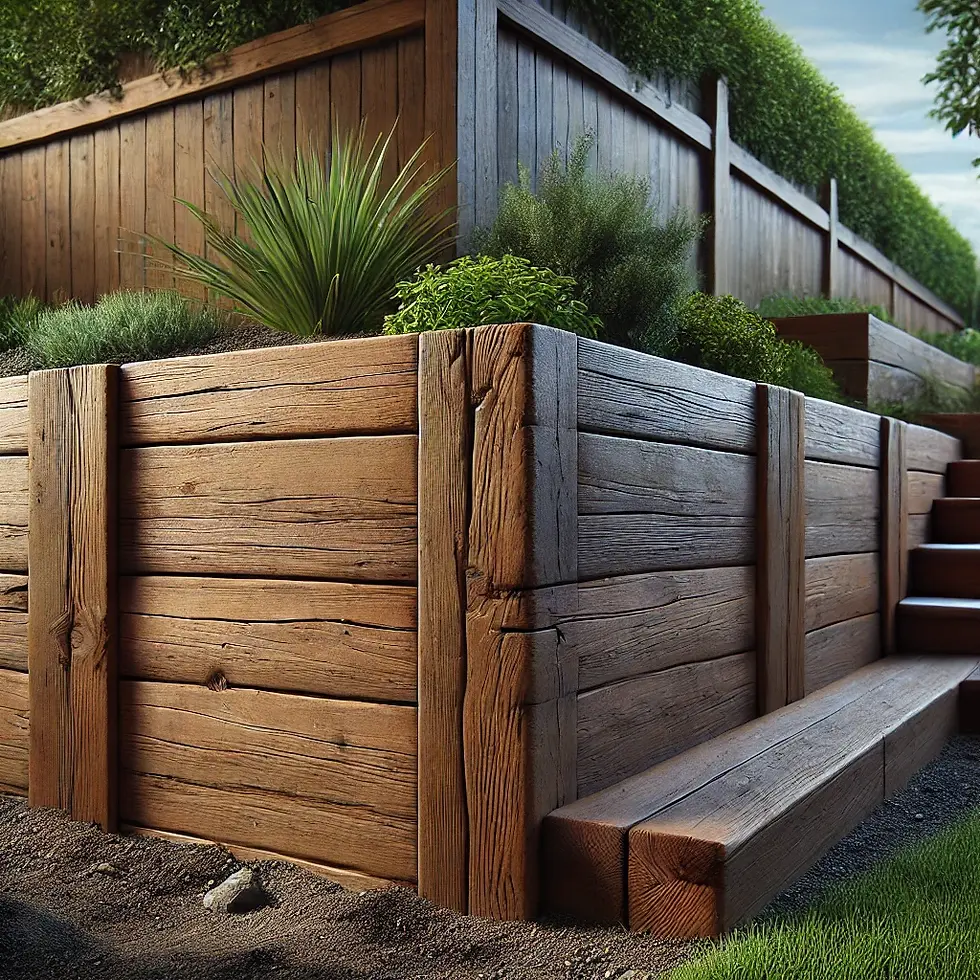Boulder, wood, and block retaining walls differ in cost, durability, aesthetics, and construction methods. Each material has distinct advantages and challenges, making it essential to choose the right one for your landscaping needs.
Understanding Retaining Walls

Retaining walls serve a critical purpose in landscaping and construction. They hold back soil, prevent erosion, and create level areas in uneven terrain. Whether you’re designing a garden, protecting your property from soil erosion, or enhancing your landscape’s aesthetic appeal, the choice of material is crucial.
Overview of Boulder, Wood, and Block Retaining Walls
Let’s dive deeper into the differences between these three popular materials.
Boulder Retaining Walls

Durability and Strength
Boulder retaining walls are known for their exceptional durability. These walls can withstand significant pressure and are highly resistant to erosion. Thanks to their natural formation, boulders are built to last and perform well in various weather conditions.
Aesthetic Appeal
Boulders offer a rugged, natural look that seamlessly blends with outdoor environments. This makes them ideal for rustic or naturalistic landscapes, providing a timeless charm that many homeowners desire.
Cost Considerations
The cost of boulder retaining walls can range from $25 to $50 per square foot installed. Pricing depends on the availability of boulders in your area. Transportation costs can increase significantly if boulders are not locally sourced.
Installation Process
Building a boulder wall requires heavy machinery and skilled labor, especially for large stones. These factors can add to the overall expense but ensure a sturdy and visually appealing structure.
Wood Retaining Walls

Durability Challenges
Wooden retaining walls, while cost-effective initially, have a shorter lifespan. Even pressure-treated wood is prone to rot, decay, and insect damage over time, especially in damp climates.
Warm Aesthetic
Wood offers a warm, natural look that complements garden settings and traditional landscapes. However, its appearance can deteriorate without regular maintenance.
Cost Efficiency
Wood retaining walls are among the most affordable options, costing between $15 and $30 per square foot installed. However, frequent maintenance and potential replacement costs should be considered when budgeting.
Simple Installation
Wooden retaining walls are relatively easy to install, making them a favorite choice for DIY enthusiasts. They’re also versatile, allowing for creative designs in smaller landscapes.
Block Retaining Walls

Exceptional Durability
Block retaining walls, typically made from concrete or stone, are extremely robust. They can support substantial weight and pressure, making them suitable for both residential and commercial projects.
Customizable Aesthetic
Concrete blocks come in various colors, textures, and sizes, allowing for customization to fit modern or traditional designs. They’re perfect for those seeking a sleek, polished look.
Cost Breakdown
Block walls cost between $14 and $40 per square foot installed. While the upfront cost is higher than wood, their longevity can make them a more cost-effective choice over time. If you're comparing block walls with poured concrete walls, check out Block vs. Concrete Cost to explore the price differences and determine the best option for your project.
Labor-Intensive Installation
Constructing a block retaining wall requires precision, particularly in leveling the base course. Professional installation is often recommended to ensure stability and durability.
Factors to Consider When Choosing a Retaining Wall

Landscape Design and Aesthetics
Consider how the wall’s appearance complements your property. Boulder walls offer a rugged charm, wood provides warmth, and block walls deliver a sleek, modern look. For a detailed comparison of these materials, including concrete and boulder walls, check out Concrete vs. Boulder: Choosing the Best Retaining Wall.
Budget Constraints
Evaluate both upfront costs and long-term expenses. Wood may be cheaper initially but requires frequent maintenance, while block and boulder walls offer better longevity.
Maintenance Requirements
Boulder and block walls require minimal upkeep, whereas wood demands regular treatment to prevent decay.
Environmental Impact
Boulders and blocks are more environmentally friendly as they’re durable and require fewer replacements. Wood, however, involves regular harvesting, which may impact sustainability efforts.
Pros and Cons Comparison

Boulder Retaining Walls
Pros: Durable, natural appearance, minimal maintenance.Cons: High initial cost, heavy machinery required for installation.
Wood Retaining Walls
Pros: Affordable, easy to install, warm aesthetic.Cons: Short lifespan, high maintenance, susceptibility to rot.
Block Retaining Walls
Pros: Customizable, long-lasting, strong.Cons: Labor-intensive installation, higher upfront cost.
Conclusion
Choosing the right retaining wall material depends on your specific needs, budget, and aesthetic preferences. Boulder walls are ideal for natural, rugged landscapes and require minimal maintenance. Wood walls offer a warm, inviting look at a lower initial cost but come with higher maintenance needs. Block walls provide durability and customization options, making them a versatile choice for modern and traditional designs alike.


Комментарии